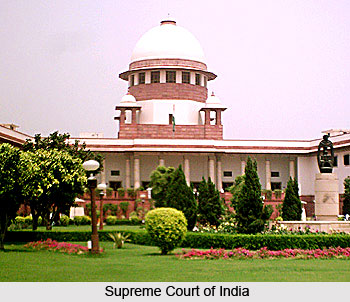 The Act covering the removal of a Supreme Court or High Court is governed by Articles 124 (4) and (5) and 217 (1) (b) and 218 of the Constitution on the ground of proven misbehaviour or incapacity. But at the same time the Constitution of India has not given a detailed definition of the parameters of "misbehaviour" or incapacity". The complaint about misbehaviour or incapacity against a judge has to be probed under the Judges (Inquiry) Act, 1968.
The Act covering the removal of a Supreme Court or High Court is governed by Articles 124 (4) and (5) and 217 (1) (b) and 218 of the Constitution on the ground of proven misbehaviour or incapacity. But at the same time the Constitution of India has not given a detailed definition of the parameters of "misbehaviour" or incapacity". The complaint about misbehaviour or incapacity against a judge has to be probed under the Judges (Inquiry) Act, 1968.
Every judge of the Supreme Court of India holds office until the age of 65 years. A judge may be removed from his office only by an order of the President, passed after an address by each House of Parliament for his removal "on the ground of misbehaviour or incapacity" supported by a majority of the total membership of that House and by a majority of not less than two thirds of the members present and voting/ is presented to him in the same session. The procedure maybe regulated by Parliament by law (article 124). There has been only one case - that of Justice Ramaswamy - when proceedings for the removal of a judge were undertaken. But, the motion for presenting an address to the President for his removal failed to get the required majority in Lok Sabha.
Contrary to the common belief, there is no provision in the Constitution of India for the impeachment of a judge. The impeachment is provided for the President and none else. Also, there is a fundamental difference between removal procedure and impeachment procedure and between the impact of the adoption of a motion for impeachment and the passing of a motion for presenting an address to the President seeking orders for the removal of a judge. The grounds for the impeachment of the President have to concern `violation of the Constitution` while an address for removal of a judge has to be on the ground of "misbehaviour or incapacity". In case of impeachment, the moment the motion is passed by the two Houses, the President forthwith ceases to be the President. But in case of the motion for removal, it is for the President to consider issuing necessary orders or advise reconsideration etc.




















